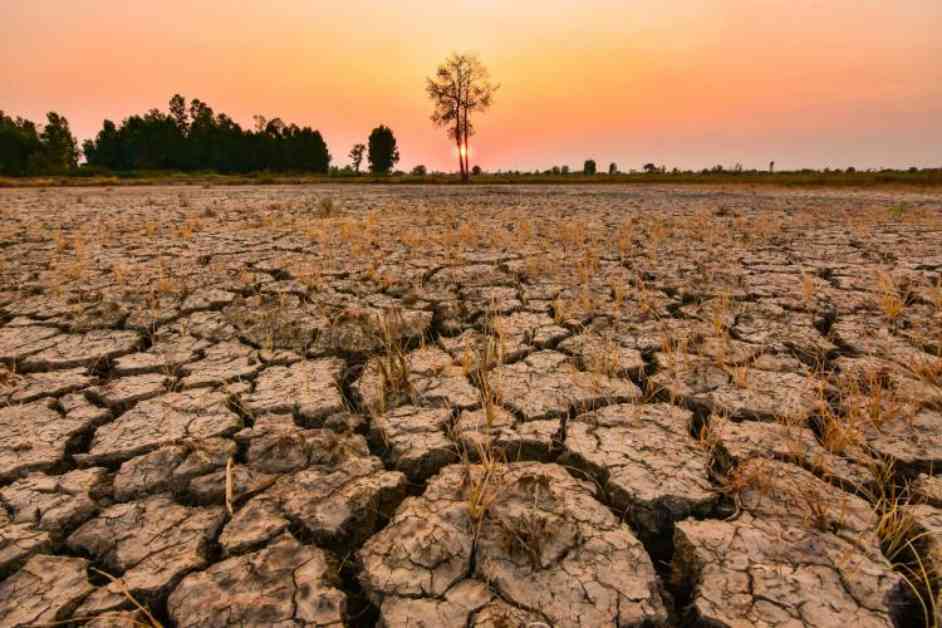El Niño’s Impact on Global Climate
The climate pattern known as El Niño has been a major player in shaping global weather patterns, with its most recent event occurring from mid-2023 to mid-2024. During this time, global temperatures broke records for 12 consecutive months, leading to unprecedented heatwaves, floods, and droughts across the world. This El Niño event was considered one of the strongest on record, highlighting the significant impact it can have on the planet.
In a recent study published in the journal Nature, a team of researchers led by CU Boulder climate scientist Pedro DiNezio revealed a concerning prediction for the future. According to the study, if greenhouse gas emissions continue to increase at their current rate, the frequency of extreme El Niño events could rise significantly by the year 2050. This projection raises alarms about the potential devastating consequences that could result from more frequent and intense El Niño events in the coming decades.
Understanding El Niño and Its Effects
El Niño occurs when water temperatures along the equator in the Pacific Ocean rise by at least 0.9°F above average for an extended period. This seemingly minor temperature increase can lead to significant shifts in wind patterns and ocean currents, triggering unusual weather phenomena such as heatwaves, floods, and droughts on a global scale. When the temperature anomaly reaches 3.6°F above average, the El Niño event is classified as extreme, indicating a more severe impact on weather patterns.
Historical data collected by the U.S. National Oceanic and Atmospheric Administration (NOAA) shows that there have been three to four extreme El Niño events recorded since the 1950s. These events have been associated with devastating consequences, such as the record rainfall and landslides in California during the winter of 1997-98, which claimed numerous lives. Additionally, prolonged warming during extreme El Niño events has led to the loss of significant portions of coral reefs around the world, highlighting the ecological toll of these events.
DiNezio emphasized the difficulty in predicting El Niño events due to the complex mechanisms driving them. Despite advances in climate modeling, accurately forecasting the timing and intensity of El Niño events remains a challenge. However, the study’s findings point to a potential link between climate change and the intensification of extreme weather events, including El Niño, underscoring the need for further research and mitigation efforts.
The Impact of Climate Change on El Niño Events
The research conducted by DiNezio and their team aimed to simulate El Niño events over the past 21,000 years using a computer model. By analyzing data from fossilized shells of foraminifera, the team reconstructed the ocean temperature fluctuations driven by El Niño events throughout history. The model’s simulations aligned with the ancient record, providing insight into the evolution of El Niño events as the planet warmed since the last Ice Age.
The study’s projections paint a grim picture of the future if greenhouse gas emissions continue unabated. According to the model, there is a significant risk that by 2050, one in two El Niño events could reach extreme intensity, posing a substantial threat to global weather patterns and ecosystems. The findings underscore the urgent need for action to reduce emissions and build resilience to extreme weather events in vulnerable communities.
DiNezio’s research highlights a critical factor driving the frequency and intensity of El Niño events as the planet warms: the Bjerknes feedback mechanism. This feedback loop, which is triggered by changes in wind patterns and ocean temperatures, can lead to the amplification of El Niño events, resulting in more frequent extreme occurrences. As the atmosphere warms due to greenhouse gas emissions, the strength of the Bjerknes feedback is expected to increase, further exacerbating the impact of El Niño events in the future.
In conclusion, the study’s findings serve as a stark warning about the potential consequences of unchecked climate change on the frequency and intensity of extreme El Niño events. The urgency of the situation calls for immediate action to reduce emissions, mitigate the impacts of climate change, and build resilience in communities vulnerable to extreme weather events. As the planet faces an uncertain future, it is essential to heed the warnings of scientists like Pedro DiNezio and take proactive steps to safeguard our environment and society for generations to come.













